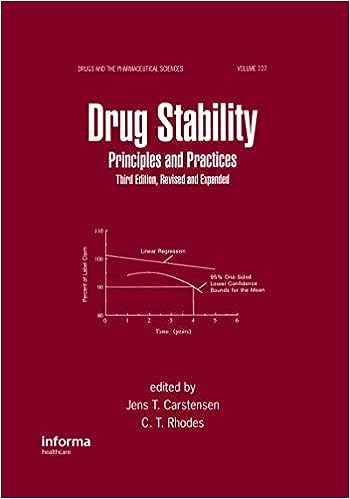Role of Packaging Integrity in Stability Studies
Packaging integrity plays a crucial role in stability studies, ensuring that drug products remain protected from external factors that could compromise their quality, safety, and efficacy over time. The packaging serves as the first line of defense against factors such as light, moisture, oxygen, and contaminants that can trigger degradation. In this discussion, I’ll highlight the key role of packaging integrity in stability studies.
Preservation of Product Quality
1. Barrier Function: Packaging materials act as barriers, preventing the entry of harmful substances and the escape of volatile components.
2. Light Protection: Opaque packaging shields products from light
3. Moisture Prevention: Moisture-resistant packaging prevents the uptake of water, which can lead to chemical reactions and physical changes.
Minimization of Environmental Impact
1. Oxygen Exclusion: Oxygen-sensitive products are protected by packaging that minimizes
oxygen ingress, reducing oxidative degradation.2. Contaminant Avoidance: Airtight packaging prevents the entry of contaminants, preserving product purity.
Support for Stability Claims
1. Realistic Conditions: Packaging replicates the product’s intended storage environment, ensuring stability studies mimic real-world scenarios.
2. Shelf Life Validation: Packaging integrity validation ensures that the established shelf life is attainable under appropriate storage conditions.
Regulatory Compliance
1. Submission Requirements: Regulatory agencies demand evidence of packaging integrity validation and its impact on stability claims.
2. Labeling Accuracy: Packaging integrity validates that the product remains within label claims throughout its shelf life.
Consideration of Degradation Mechanisms
1. Photodegradation: Packaging with UV blockers prevents light-induced degradation, particularly relevant for light-sensitive products.
2. Oxidation: Oxygen-impermeable packaging safeguards against oxidative degradation, common in products prone to oxidation.
Quality Assurance and Consumer Safety
1. Contamination Prevention: Packaging safeguards against contamination, ensuring the product’s safety for consumer use.
2. Reliable Dosage: Packaging integrity preserves the dosage form, ensuring accurate and consistent dosing throughout the shelf life.
Conclusion
Packaging integrity is a vital factor in stability studies, influencing the product’s resilience against degradation, environmental impact, regulatory compliance, and consumer safety. Adequate packaging selection and validation ensure that stability claims are accurate and that products maintain their quality and effectiveness over their intended shelf life.
